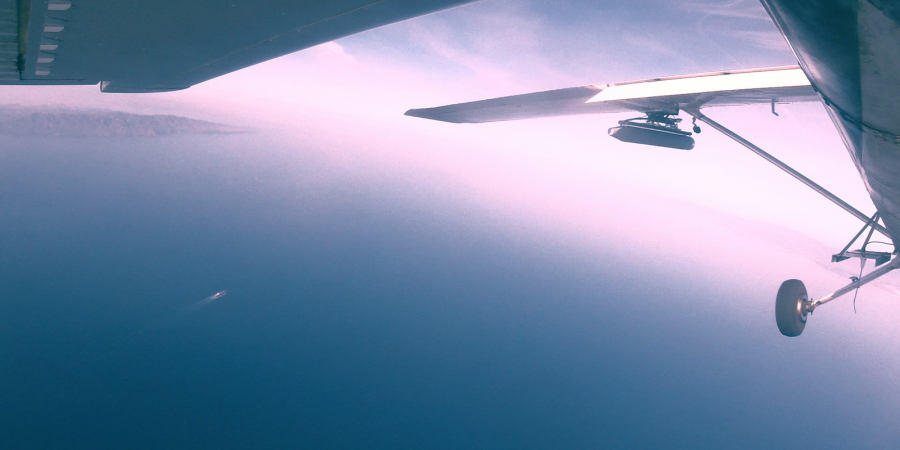KNOWLEDGE BASE CONTENTS
Knowledge Base / When We Say Radar
1. What Does IMSAR Mean When We Say Radar?
RADAR: RAdio Detection And Ranging. Like laser, modem, scuba, and sonar, the acronym first used by the US Navy in 1940 has become such a common word that it’s no longer written in all caps. The definition of radar has come a long way from its initial application for military use during World War II to its current everyday applications from automotive safety to biomedical practice. Radar typically operates within the electromagnetic spectrum in frequency bands between 200 MHz to 36 GHz. As radar designers and manufacturers work to solve human challenges in several areas, radar has a myriad of sizes, shapes, levels of complexity, and applications within those bands. So, what does IMSAR mean when we say “radar”?
We Mean SAR
Synthetic Aperture Radar is a radar that, through movement, electronically emulates a much larger antenna, resulting in finer resolution imagery through a much smaller radar. Typically, SAR systems are airborne and side-looking. They are designed to scan the earth’s surface, collecting high-resolution imagery and multiple other geospatial data products.
Additionally, inherent in radar is its ability to see in the dark and through degraded visual environments, such as smoke, clouds, and fog. With this advantage, SAR systems complement and work with other platform sensors, such as EO/IR cameras, for a true all-weather solution.

IMSAR Radar System Performing Maritime Surveillance from the Wing of a Small Airborne Platform
We’re Talking Low SWaP
Historically, SAR systems have been relegated to satellites and large, specialized aircraft due to their size, weight, power and expense. When we say “SAR,” we’re talking about small size, weight, and power (SWaP) sensors for Group 1-5 unmanned and manned turboprop platforms. These smaller SAR systems incorporate the same advanced capabilities as the radar systems of the past, enabling a host of new aircraft to access the benefits that radar has to offer.
Today’s Airborne SAR Systems are Low-SWaP, as illustrated here with podded SAR systems mounted on the King Air B200, a turboprop-sized manned aircraft (left), and the Skyfront Perimeter 8, a Group 2 unmanned platform.
We’re Thinking Multimode
The surface scanning and imaging ability of SAR systems allows for multiple interpretations of data through various radar modes. Standard radar system capabilities include SAR imaging, coherent change detection, and moving target indication modes.
SAR Imaging: Creates multiple high-resolution black-and-white images. The systems can perform both focused high-resolution imaging and coarse-resolution wide area searches.
CCD: Compares multiple SAR images of the same area collected at different times and automatically detects and highlights changes that occurred in that area between the data collections.
MTI: Performs rapid scans over a wide area, detects and tracks moving targets in real time, on land or on sea.
Furthermore, SAR is capable of performing more advanced modes such as Interferometric SAR (IFSAR), Inverse SAR (InSAR), Forward Looking SAR (FLOSAR), and Air-to-Air MTI (AMTI).
Examples of Radar Data Products (clockwise from upper left): SAR imaging, coherent change detection (CCD), maritime moving target indication (MMTI), and ground moving target indication (GMTI).
We’re Implying Multi-INT
Like pieces of a puzzle, when the multimode capabilities of SAR systems are intelligently combined, they provide a big-picture view to inform operational decisions. Synthetic Aperture Radar technologies are used for multiple military and commercial ISR applications:
| Counter Drug | Maritime Patrol | Search & Rescue |
| Range Clearing | Convoy Overwatch | Route Clearance / Counter-IED |
| Oil Spill Detection | Disaster Support | Illegal Fishing |
| Ice Flow Monitoring | High Value Target Tracking | Battle Damage Assessment |
| Border Patrol / Counter Trafficking | Force Protection | Forest Fire Detection |
We Plan to Democratize Radar
Radar, with its multitude of modes, capabilities, and unique benefits, is an important aspect of the overall approach to protecting Life, Liberty, and the Pursuit of Happiness. We seek to eliminate barriers that have prevented customers from looking to radar to augment or solve their ISR problems. We recognize that what we are able to do is only possible through the tremendous effort of all of those that have gone before us and all those that continue to push forward in the study and development of radar and other enabling technologies. At IMSAR, we seek to help democratize radar, making it more usable, affordable, and accessible.
Ryan Smith, founder, president and CEO of IMSAR, and Larry Moore, executive vice president, further explain what it means to democratize radar.
If you would like to connect with us to learn more about radar, please contact us at sales@imsar.com.
Related Content
Updated Feb. 17, 2021
